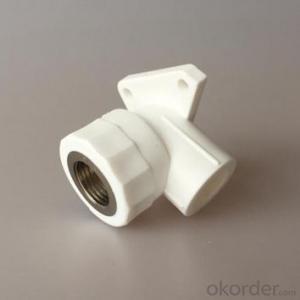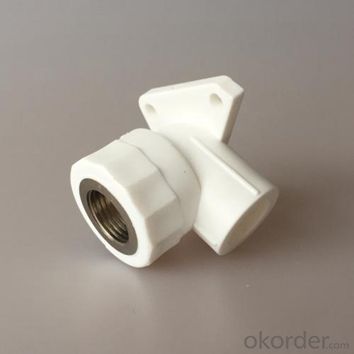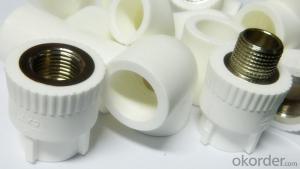1 4 Plastic Pipe Fittings 90° Eblow Male with Brass Threaded Insert
- Loading Port:
- Tianjin
- Payment Terms:
- TT OR LC
- Min Order Qty:
- 1000 pc
- Supply Capability:
- 100000 pc/month
OKorder Service Pledge
OKorder Financial Service
You Might Also Like
Product Description:
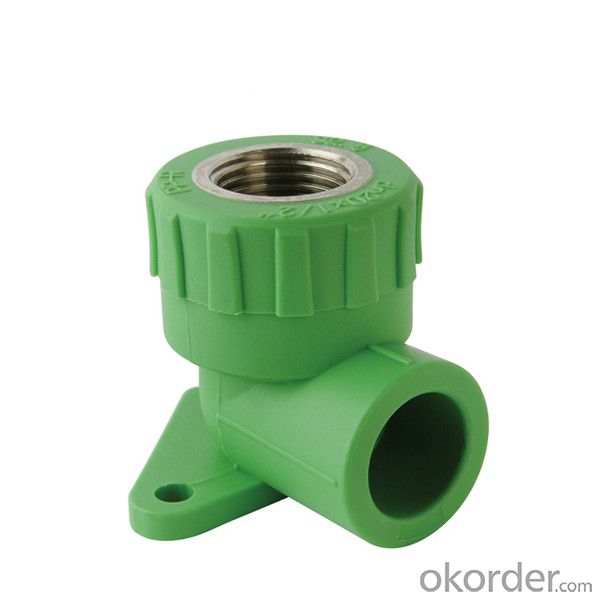
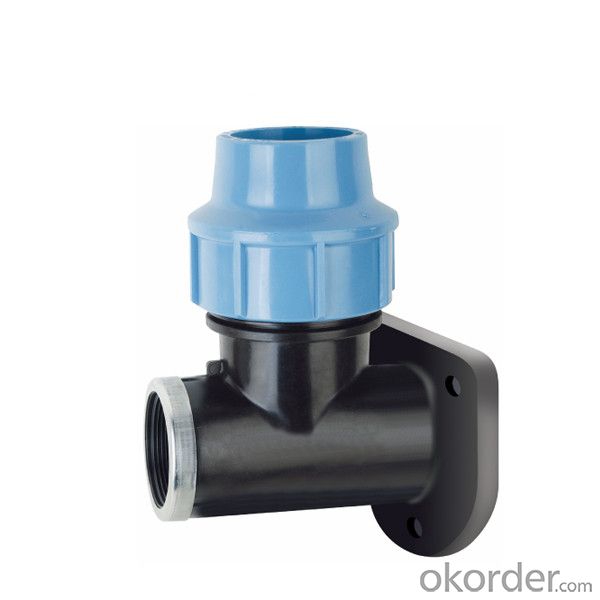

Quick Details
Material: PP-R
Technics: Forged
Type: Elbow
Model Number: DSE901-902
Connection: Welding
Shape: Equal
Specifications
Standard: DIN8077/8078
Material: R200P from Korea
Size: DN20~25
Color: Green, White, Grey, Blue
Applications
1) Healthy, bacteriological neutral, conforming to drinking water standards
2) Resistant to high temperatures, good impact strength
3) Convenient and reliable installation, low construction expenses
4) Excellent heat-insulation property from minimum thermal conductivity5) Lightweight, convenient to transport and h
andle, good for labor-saving.
6) Smooth inner walls reduce pressure loss and increase flow speed
7) Sound insulation (reduced by 40% compared to galvanized steel pipes)
8) Light colors and excellent design ensure suitability for both exposed and hidden installation
9) Recyclable, environment-friendly, accords with GBM standards
FAQ:
Q1:How Can I Get A Sample?
A1:You can get samples by communicate with our export sales.
Q2:How Long Is Delivery?
A2:Delivery time will be30-45days according to order quantity.
Q3:What Is The MOQ?
A3:MOQ depends on different items.
Q4:What Is Our Normal Payments Terms?
A4:Our normal payment terms now is: T/T, L/C or western union,paypal
- Q: Can plastic pipe fittings be used in irrigation systems?
- Yes, plastic pipe fittings can be used in irrigation systems. Plastic materials, such as PVC (polyvinyl chloride) and polyethylene, are commonly used for irrigation pipes and fittings due to their durability, affordability, and resistance to corrosion and chemicals. Plastic pipe fittings provide a reliable and leak-free connection between pipes, making them suitable for various irrigation applications.
- Q: Can plastic pipe fittings be used for cooling water in power plants?
- Yes, plastic pipe fittings can be used for cooling water in power plants. Plastic pipes and fittings are commonly used in water distribution systems as they are resistant to corrosion, lightweight, and have a long service life. However, the specific choice of materials and fittings will depend on the temperature, pressure, and other requirements of the cooling water system in the power plant.
- Q: Can plastic pipe fittings be used for chemical transportation?
- No, plastic pipe fittings are not recommended for chemical transportation due to the potential risk of chemical reactions or degradation of the plastic material. It is advisable to use chemical-resistant materials such as stainless steel or speciality plastic pipe fittings designed specifically for chemical transport.
- Q: Are plastic pipe fittings compatible with solvent welding?
- Yes, plastic pipe fittings are compatible with solvent welding. Solvent welding is a process of joining plastic pipes and fittings by using a solvent adhesive. The solvent softens the plastic, allowing the pipe and fitting to fuse together, creating a strong and leak-proof connection.
- Q: How do you remove a plastic pipe fitting?
- To remove a plastic pipe fitting, you typically need to follow these steps: 1. Turn off the water supply: Locate the main water valve and shut it off to prevent any leaks or water flow while removing the fitting. 2. Drain the pipe: Open a faucet or valve downstream from the fitting to drain any water remaining in the pipe. 3. Cut the pipe: Using a pipe cutter or hacksaw, carefully cut the plastic pipe on both sides of the fitting. Be cautious not to damage the adjacent pipe or the fitting itself. 4. Loosen the fittings: Depending on the type of fitting, you may need to use a wrench or pliers to loosen and remove any nuts, clamps, or rings securing the fitting to the pipe. 5. Separate the fitting: Once the nuts/clamps are loose, gently twist and pull the fitting away from the pipe. If it's stubborn, applying heat with a heat gun can help soften the plastic and make it easier to remove. 6. Clean the pipe ends: After removing the fitting, use a utility knife or sandpaper to clean any burrs or debris from the pipe ends before installing a new fitting or reconnecting the existing one.
- Q: Can plastic pipe fittings be used for chemical waste systems?
- No, plastic pipe fittings should not be used for chemical waste systems as they may not be chemically resistant and could lead to leaks or contamination. It is recommended to use fittings specifically designed for chemical waste systems, such as those made from chemically resistant materials like PVC or CPVC.
- Q: Are plastic pipe fittings resistant to earthquakes?
- Plastic pipe fittings can vary in their resistance to earthquakes depending on their material and design. Some plastic materials, such as PVC, can be relatively brittle and prone to cracking under seismic activity. However, there are also more resilient plastic materials, like high-density polyethylene (HDPE), which offer better resistance to earthquakes due to their flexibility and ability to absorb vibrations. Additionally, the design and installation of the fittings can also play a significant role in their earthquake resistance. So, while plastic pipe fittings can provide some level of resistance, it is essential to consider the specific material, design, and installation methods to ensure their effectiveness in seismic events.
- Q: Can plastic pipe fittings be used for cooling systems in industrial plants?
- Yes, plastic pipe fittings can be used for cooling systems in industrial plants. Plastic fittings are known for their durability, chemical resistance, and ability to handle various temperatures, making them suitable for cooling applications. They are also lightweight, easy to install, and cost-effective compared to other materials. However, it is crucial to choose the right type of plastic and ensure compatibility with the cooling fluids used in the system to prevent any potential issues or failures.
- Q: How do plastic pipe fittings handle changes in water pressure?
- Plastic pipe fittings are designed to withstand changes in water pressure quite effectively. The materials used, such as PVC or CPVC, have inherent flexibility that allows them to expand and contract with variations in pressure. Additionally, these fittings are typically designed with features like ribbed or threaded connections, which enhance their ability to handle different pressure levels. Overall, plastic pipe fittings are known for their durability and reliability in managing variations in water pressure.
- Q: The difference between the hot melt connection and connection to electricity
- The use of the machine is not the same, fused link using electro fusion welding machine, currently on the market in Tianjin to more hot melt connection using hot melt welding machine manufacturers, more than;
Send your message to us
1 4 Plastic Pipe Fittings 90° Eblow Male with Brass Threaded Insert
- Loading Port:
- Tianjin
- Payment Terms:
- TT OR LC
- Min Order Qty:
- 1000 pc
- Supply Capability:
- 100000 pc/month
OKorder Service Pledge
OKorder Financial Service
Similar products
Hot products
Hot Searches
Related keywords
